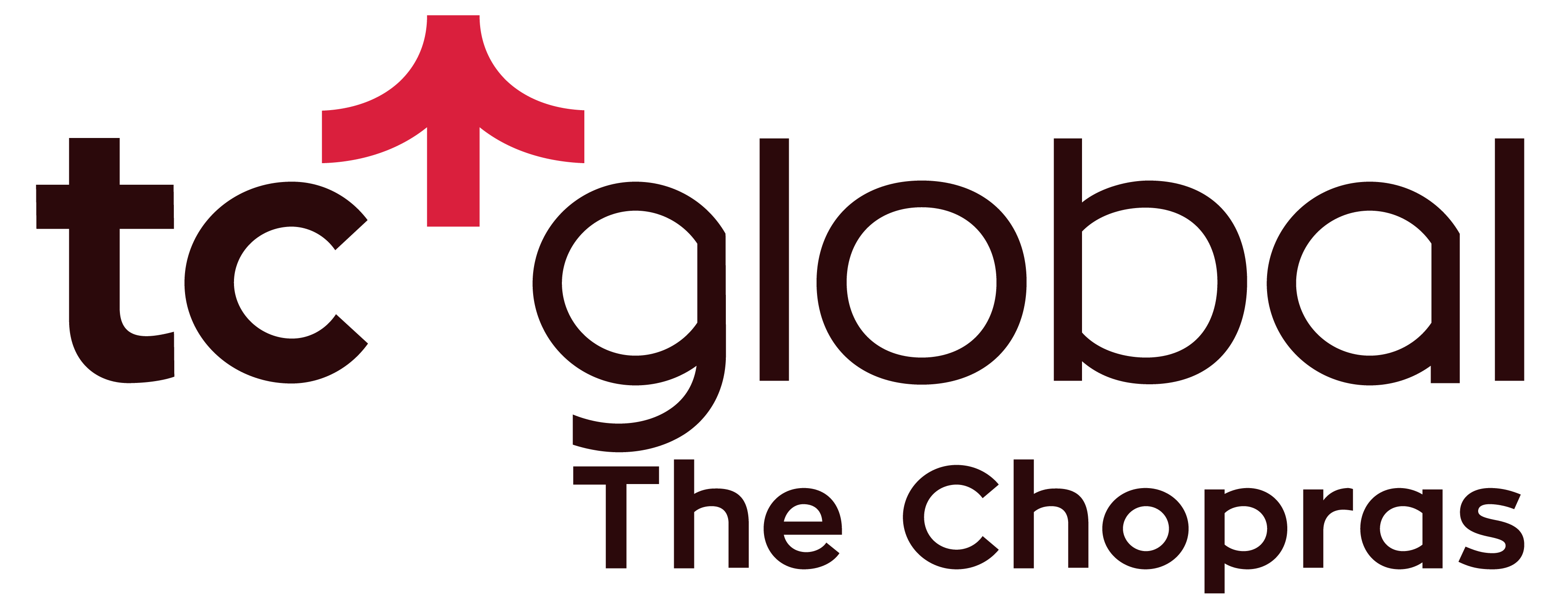MIT vs Harvard is one decision that you want to be in the position of making, if you’re looking for higher education in the USA. Fierce competitors, academic peers, and neighbours, the Massachusetts Institute of Technology and Harvard University are two of the most elite institutions in the world and are synonymous with academic rigour and excellence, research and innovation, and prestige.
To make a decision between these two universities is no easy task. We try and break it down for you here – read for an in-depth comparison of these prestigious institutions, covering academics, campus life, financial aspects, and career opportunities to help you make the best choice for 2024.
Overview of MIT and Harvard

Choosing between two world-class universities that are also neighbours is not simple. Harvard University, a member of the prestigious Ivy League along with Yale, Princeton, Columbia, Cornell, Dartmouth, University of Pennsylvania, and Brown, is the oldest university in the United States. MIT is the most prestigious when it comes to STEM. The two Cambridge schools have a lot in common, with a few key distinctions.
They can both be called world number 1, but in different fields of study. While Harvard has a comprehensive list of programs to choose from, it is most known for liberal arts, social sciences, natural sciences, business, medicine, and law. MIT, as the name suggests, focuses almost entirely on technology and its applications.
With this main difference in mind, let us delve into these two top universities.
Brief History and Background
Massachusetts Institute of Technology
Incorporated in 1861 amidst the ongoing Civil War in the USA, Massachusetts Institute of Technology or MIT is a private research university now located in Cambridge, Massachusetts. Founded in response to, and to accelerate the nation’s Industrial Revolution, MIT continues to be at the forefront of innovation and development when it comes to science and technology.
The school adopted a European polytechnic university model, emphasizing on laboratory work and practical application of the applied sciences and engineering. In order to reflect their commitment to the applied sciences and technology, the university chose the beaver, nature’s engineer, as their mascot.
MIT has consistently been one of the top ten universities of the world since its inception, and currently ranks number 1 in the world in the 2025 World University Rankings published by Quarendelli Symmonds. In the metrics published by the US News and World Report, MIT ranks second in the country, after Princeton University. It continues to be one of the most pioneering, sought after, and selective schools for the study of science and technology.
Harvard University
The oldest institution in the United States, Harvard University (nicknamed Crimson) is a private Ivy League research university located in Cambridge, Massachusetts. Established in 1636 as Harvard College under the authority of the Massachusetts colonial legislature, it is most known for its enduring history of innovation in higher education.
With a reputation that rivals that of Oxford and Cambridge in the UK, Harvard has three main campuses: the main Cambridge campus centred on Harvard Yard, an adjoining campus across Charles River in the Allston neighbourhood of Boston, and the medical campus in Boston’s Longwood Medical Area.
Ranked 3rd in the country by US News and World Report and 4th in the world by QS World University Ranking, Harvard is one of the most selective and elite schools to get into. World-renowned for its faculty, state-of-the-art resources, and individualized instruction, the name is synonymous with limitless opportunities for its students.
Key Statistics and Rankings
Here is a table comparing the key stats and ranks of the two universities.
| MIT | Harvard | |
| Campus | Cambridge, MA | Cambridge, MA |
| Nickname | Beavers | Crimson |
| U.S. News National Rank 2024 | 2 | 3 |
| QS World University Rank 2025 | 1 | 4 |
| Undergraduate Student Body | 4,576 | 7,063 |
| Graduate Student Body | 7,344 | ~ 18,200 |
| % of International Enrollment | 29.17% | 26.8% |
| Average Acceptance Rate | ~ 4.8% | 3% |
| Student to Faculty Ratio | 3:1 | 7:1 |
| Number of Undergraduate Programs | 55 majors and 58 minors | 3,700 courses in 50 fields of study |
| Number of Graduate Programs | 70+ degrees in 49 different fields of study | 134 graduate and 32 professional degrees |
| Research Expenditure | Over $1 billion | Over $1 billion |
| Number of Division I Teams | 33 teams playing at Division III | 42 |
| Number of Clubs and Student Org.s | 450+ | 450+ |
| Colours | Cardinal Red and Grey | Crimson, White and Black |
MIT vs Harvard: Academic Comparison

With both MIT and Harvard offering some of the finest academic programs in the world, how can a prospective student choose between the two neighbouring schools? The undergraduate or graduate courses that they offer, their choices and flexibility, ranking, degrees and class sizes, academic calendars, research facilities and budgets can become important factors in deciding Harvard vs MIT.
Undergraduate Programs
Focus Areas: At the outset, the key difference between these two giants of higher education is their academic environment. Harvard has a rich tradition of liberal arts education that seeps into almost all of its fields of study. Harvard College, the undergraduate college of Harvard University offers a broad spectrum of study areas with emphasis on an interdisciplinary and a holistic approach to knowledge.
In contrast, MIT is modelled after the polytechnic universities of Europe. The school’s focus is clear and unparalleled when it comes to STEM and its allied fields of study. It typically attracts students who are inclined towards technological innovations and an aptitude for quantitative disciplines. That said, the school also has top-notch programs in the fields of economics, humanities, media, political sciences, and writing.
That said, one of the biggest advantages of studying in either of the two universities is their cross-registration policy. With just about a mile between Harvard and MIT, MIT students can register for a few courses in Harvard and vice versa.
Standardized Test Scores: Unlike most American colleges that have continued with their test optional policies since the pandemic, both Harvard College and MIT now require applicants to submit SAT/ ACT/ IB/ AP scores when applying for their undergraduate programs.
The average SAT score for MIT admitted students ranges between 1520 and 1580 while the median score is around 1520 for Harvard. ACT scores for both schools range between 33 and 36.
When it comes to high school GPA, a minimum of 3.9 or higher is required for your application to be considered competitive.
Core Curriculum: Both universities have clear requirements that have to be met by all undergraduate students, no matter their area of study. At Harvard, it is called General Education while MIT calls it General Institute Requirements (GIRs).
All students of Harvard College are required to complete four General Education courses, one from each category – Aesthetics and Culture; Ethics and Civics; History, Societies Individuals; and Science and Technology in Society. In addition, students must also complete the College’s requirements in the following areas – language, expository writing, distribution, and quantitative reasoning with data.
MIT’s GIRs include the science core (six foundational courses in mathematics, physics, biology, and chemistry), the HASS requirement (a minimum of eight subjects in the humanities, arts, and social sciences), the communication requirement (to develop effective writing and speaking skills), laboratory requirement (a minimum number of credits of practical, project-based work),
REST requirement (two subjects of Restricted Electives in Science and Technology) and a physical education requirement.
Class Sizes: When it comes to the student body, MIT is a significantly smaller institution when compared to Harvard. MIT has one of the lowest student to faculty ratios, averaging at about 3:1 while Harvard’s is about 7:1. That said, if you are comparing the number of classes with fewer than 20 students, the difference is nominal, with the numbers showing around 71% at MIT and 76% at Harvard.
Top Majors:
| MIT | Harvard |
|
|
Graduate Programs
Graduate Program Options: MIT is ranked marginally higher than Harvard University but Harvard has more options, across disciplines, and more interdisciplinary areas of study. Harvard is also world-renowned for its professional programs such as law, medicine and business, while MIT’s focus is limited to STEM and other allied quantitative fields. That said, MIT’s Sloan School of Business is a world-class school for MBA programs but ranks lower than Harvard Business School.
Harvard also has a significantly higher student population at over 18,200 while MIT’s is less than half at around 7,400. Harvard offers more diversity, networking opportunities, and real world experiences when compared to the smaller, more intimate set up of MIT.
Admissions: Both universities are known for their highly competitive admissions, with students from all over the world applying. Their acceptance rates are some of the lowest in the world, ranging between 3 and 5%.
The minimum admission criteria in both universities include a valid baccalaureate degree from a recognised university (GPA varies with departments), standardized test scores (GRE/ GMAT), a strong application form with a well-written Statement of Purpose (SOP), relevant work experience (for some courses), and English proficiency test scores (for international students).
Top Graduate Programs:
| MIT | Harvard |
|
|
Global Reputation: Both universities are globally renowned and are often seen vying for the top spot across all ranking tables. A graduate degree in either of these schools is often considered with reverence and can open up numerous academic and career opportunities. That said, Harvard has the elite distinction of being part of the prestigious Ivy League group of institutions, while MIT is not, despite being Harvard’s neighbour.
Overall and Subject Rankings
| Massachusetts Institute of Technology | Harvard University |
| Overall Rank US News 2024: 2 | Overall Rank US News 2024: 3 |
| Times Higher Education WUR: 3 | Times Higher Education WUR: 4 |
| QS WUR 2025: 1 | QS WUR 2025: 4 |
| Subject and Other Ranking (Source: QS Global Subject Rankings 2024) | |
|
|
From the table, two things become clear. First, both universities are academic giants, and to consider them as options for higher education is the mark of an excellent student. Secondly, their niche focus areas are quite distinct. Harvard has a better reputation for the humanities, social sciences, arts, and natural sciences, while MIT is unbeatable when it comes to the applications of STEM.
Academically speaking, one cannot really go wrong when choosing between MIT and Harvard. When choosing, the focus should be on the specific departments, their curricula, teaching styles and pedagogies, and what best aligns with your career goals.
Constituent Schools
MIT’s undergraduate and graduate programs are offered by the following schools
- School of Architecture and Planning
- School of Engineering
- School of Humanities, Arts, and Social Sciences
- Sloan School of Management
- School of Science
- MIT Schwarzman College of Computing
Harvard University is composed of the following schools of which only Harvard College offers bachelor degree programs.
- Harvard College (Undergraduate College)
- John A. Paulson School of Engineering and Applied Sciences (SEAS)
- Kenneth C. Griffin Graduate School of Arts and Sciences (GSAS)
- Harvard School of Dental Medicine
- Harvard Business School
- Harvard Graduate School of Design
- Harvard Divinity School
- Harvard Graduate School of Education
- Harvard Kennedy School (of public policy)
- Harvard Law School
- Harvard Medical School
- T.H. Chan School of Public Health
- Harvard Extension School
- The Radcliffe Institute for Advanced Study
Research Opportunities
Both Harvard and MIT are world leading R1 research universities that encourage their students to push the boundaries of their disciplines. Both schools spend over $1 billion for research every year.
One of the premier research institutions in the world, Harvard University has always been at the frontier of scientific inquiry and innovation. The Faculty of Arts and Sciences alone houses over 45 interdisciplinary research institutes and centres.
In addition, the other professional schools have independent research programs. Harvard Law has over 30 research programs and centres while Harvard Medical is known for its world-changing innovations. For example, here are some of the key discoveries from Harvard Medical School – Smallpox vaccine, Anesthesia, Electrocardiograph, Live donor liver transplant, Circadian clock, and the relationships between microbiome and immunotherapy. Harvard is also at the forefront of bioengineering research and collaborates with MIT for genomics research.
Similarly, MIT also enables flourishing research across all of their 30 departments. The school’s research capabilities are enhanced through the work of MIT Lincoln Laboratory, the Woods Hole Oceanographic Institution, active research relationships with industry, and a wide range of global collaborations. MIT research has inspired the inventions of the first interactive minicomputer, the e-mail, transistor radio, Kindle and the e-ink, technicolor, modern lithium-ion batteries, PET scans, and numerous other innovations that have changed the world.
To sum up, both universities foster robust research environments with creative liberty in search of new knowledge. They help students develop a research mindset from the undergraduate level, helping their alumni become leaders and catalysts of change in the world.
Key Dates for Application
In this section, we will be looking at the key dates for application and admission into undergraduate programs (Fall semester) to get a sense of the timeline. Graduate schools have a different timeline. It is also recommended that you verify with the specific department / school that you are applying to, just to ensure they do not follow a different cycle.
| Important Dates | MIT | Harvard |
| Early Action (EA) Deadline | November 1 | November 1 (Restrictive EA) |
| Regular Admissions Deadline | January 4 | January 1 |
| EA Decision Posted in | Mid – December | Mid – December |
| Financial Aid Application Deadline (Regular Application) | February 15 | February 1 |
| Regular Decision Posted in | Mid-March | End of March |
| Deadline to accept offer of Regular admission | May 1 | Early May |
| Average Acceptance Rate | ~ 4.8% | 3% |
Admission Options to be considered in the MIT Harvard debate:
- Both schools do not have an Early Decision (ED) admission pathway.
- Harvard’s EA is restrictive wherein you may not apply to an early program at any other private college or university within the United States. MIT’s is non-restrictive. It is non-binding in both universities.
- You can apply only once per entry year at MIT. It means that if you are not selected in the EA round, you cannot apply through the regular admission route in the same year.
- Harvard accepts the Common Application or the Coalition Application. MIT does not accept any of these common apps, but requires students to go through their own application portal called MyMIT.
- Harvard’s application fee is $85, while MIT requires $75.
Academic Calendar
Both Harvard and MIT follow a semester system, with the main academic calendar spreading through Fall (August/ September – December) and Spring (January – April/ May). Both universities also have a shorter summer term during which some academic activities take place.
MIT vs Harvard: Campus Life and Environment

When the two universities being compared are equally excellent when it comes to academic standing, other factors must also be looked into before making a decision. Campus location, vibe, amenities, housing options and diversity are all factors that can make a prospective student prefer MIT to Harvard or the other way around.
Location
Both Harvard and MIT are located in Cambridge, Massachusetts, just about six miles from the city of Boston. In fact, for all intents and purposes, the two schools are neighbours, with just about a mile between them. Despite their proximity to the city and their urban locations, Harvard feels more suburban and self contained due to the sheer size of the campus while MIT’s smaller campus makes it more integrated with the city.
Cambridge and the greater Boston area, in addition to its varied career, networking, cultural, and socialising opportunities, is also known for its extremely chilly, snowy and windy winters.
Campus Size and Facilities
When comparing total holdings, Harvard owns around 5,000 acres in the greater Boston area but, the main Harvard campus that grew around Harvard Yard is around 209 acres housing academic and research buildings. MIT sits on 168 acres of land that encompasses over 200 buildings.
Including the Arnold Arboretum, the Carpenter Center for the Visual Arts, the Collection of Historical Scientific Instruments, the Harvard Art Museums and the Harvard Forest, the university provides numerous extensive amenities for its students. The Harvard Library is the largest academic and private library in the world. Campus life also includes common rooms, study spaces, dining halls, verdant lawns, and athletic facilities.
Despite the smaller campus, MIT provides all kinds of amenities to its students, from state-of-the-art classrooms, research labs, gym, auditorium, cafeteria, lawns, study areas and athletic facilities. The campus vibe is composed of brilliant, highly motivated people who are passionate about science, technology and innovation. Harvard, due to its larger campus and bigger student population is a lot more diverse and inclusive of people with varied interests.
Student Activities and Organizations
When it comes to extracurricular activities, both universities have a culture of enabling students to explore other interests beyond academics.
Athletics:
Harvard is home to 42 Division I intercollegiate sports teams that compete in the NCAA and the Ivy League in stunning displays of Crimson pride. Nearly 80% of Harvard undergrad students are involved in some kind of athletics. In addition to the varsity level, the university also has a longstanding tradition of intramural sports that allow students to compete with one another within the university. First-years compete for the Yard Cup, and upperclassmen chase the Straus Cup. Furthermore, Harvard students can also take part in club sports and the numerous recreational fitness options available on campus.
If athletics are a key factor in your choice, then MIT might not be the right option. MIT Engineers have 33 teams who play varied sports in the NCAA Division III. They do not have a strong athletic tradition as their Crimson competitor. In fact athletics is the reason why MIT is not part of the Ivy League.
Student clubs and organizations:
Looking beyond athletics, MIT enables over 450 clubs and student organizations to help their students pursue varied interests beyond academics. Many of these clubs are also uniquely focused on innovation and research opportunities. The MIT campus is a great fit for those riddled with scientific curiosity. Moreover, the university has an active Greek life supported by over 30 sororities and fraternities, while Harvard does not officially recognise Greek life.
Harvard houses over 450 clubs that can be divided into 13 categories ranging from Academic and pre-professional, Creative and Performing Arts, to Public Service and Religion and Spirituality. The university also conducts a Student Organization Fair, an annual tradition that takes place the first week of class, for the freshmen to get to know the options available
Housing and Accommodation
For undergraduate students at Harvard College, accommodation is provided in dorms with shared suites adjacent to Harvard Yard, where a majority of meals are eaten in Annenberg Hall. First-year students are required to live on campus. Divided into “The Houses”, they serve as the foundation for the undergraduate experience at Harvard College. 98 per cent of all undergraduates live in one of the twelve residential Houses. Similarly, MIT also requires freshmen to live on campus in one of their 11 residence halls. After the first year, about 70% of MIT undergrads live on campus.
Graduate students have access to housing options on campus in Harvard-owned properties or off campus in the Cambridge and Boston areas. The university owns about 3,000 units ranging from studios to four bedrooms, all located conveniently near Harvard’s graduate and professional schools. MIT also has dedicated housing options for its graduate students, ranging from residence halls to family apartments. The housing office of MIT also assists students with the requirements of off-campus accommodation.
MIT vs Harvard: Financial Aspects

Another major point of discussion when it comes to Harvard vs MIT is the cost involved. The cost of attendance (tuition), additional expenses such as books, student fees, insurance and housing must be taken into account before making a choice.
At the outset, both are privately owned universities and therefore do not offer any subsidised rates for local residents. Moreover, the general cost of tuition is higher (sticker price of around $70,000) when compared to public universities. That said, both universities are known for their highly inclusive financial aid programs.
| Annual Rates | MIT | Harvard |
| Tuition (Bachelor’s) | $61,990 | ~ $57,000 |
| Tuition (Master’s, not including professional programs) | ~ $61,990 | $55,000 – $64,000 |
| MBA Tuition | $86,550 | $76,410 |
| Housing (On-Campus) | $10,650 – $14,630 | $12,922 |
| Food (Meal Plan) | $7,216 | $8,268 |
| Off-Campus Housing | $12,430 – $29,160 | $8,300 – $30,000 |
| Types of Financial Aid | 1. MIT Scholarships 2. External aid 3. Federal aid 4. Work Study 5. Loans (only need-based) |
1. Scholarships & Grants 2. Outside Awards 3. Student Employment 4. Loans(only need-based) |
| International student scholarships |
|
|
| Estimated average grant for an aid student | $ 63,729 | $67,585 |
| Admission Decisions | Completely need blind | Completely need blind |
| Demonstrated Need Cover | 100% (Families with income less than $75,000 have 0% parent contribution) | 100% (Families with income less than $85,000 will not have to pay tuition) |
Here are a few important points to be kept in mind.
- As private universities, the tuition rates at both universities are much higher compared to public universities. That said, both have numerous scholarship and financial aid options. It is important to research specific scholarship options for the program/ department that you are applying for.
- The tuition fees are average figures, calculated for a typical academic year of 9 months. The fee will be higher should you choose to take extra courses in the summer months.
- The tuition fee amounts in the table are indicative of only the cost of attendance. It does not include books, student health insurance and other expenses. Student insurance alone can cost between $3,000 – $7,000 a year.
- Both universities offer only need-based scholarships. Merit scholarships are typically funded by external sources. Neither university offers athletic scholarships.
- The financial need requirements of international students are met in the same way as it is for domestic students.
- International students are not eligible for any state or federal aid.
MIT vs Harvard: Career Prospects and Alumni Network

Considering the standing of the two universities, and an alumni network peppered with stars across disciplines, there is no doubt that a graduate of their of these schools will have numerous post-graduate opportunities of their choosing. The academic rigour and culture of research in these two universities create a pedigree that recruiters often compete to get for their organisations.
Employment Rates
As one of the top colleges for graduate employment in the US, according to the Times Higher Education ranking, Harvard, ranked 4th in the US, has an employability rate of 91 – 96%, depending on the school, within six months of graduation. By the same metric, MIT stands 2nd in the country for graduate employability, only to be superseded by CalTech. A diploma from the Ivies or these tier 1 institutions is the closest to guaranteed competitive employment, irrespective of the discipline.
Notable Alumni
Both universities have vibrant alumni associations that extend worldwide. Harvard’s alumni network supports over 400,000 people who bleed crimson in over 200 countries while MIT has over 140,000 living alums across the globe.
If you are comparing Nobel Laureates as a mark of academic excellence, Harvard is associated with over 160 Nobel Prize Winners (over 50 of them currently associated with the university) while about 101 are associated with MIT. These are two institutions with some of the highest numbers of Nobel laureates in the country.
Other Notable Alumni from Harvard
- Barack Obama, Former President of the United States
- Mark Zuckerberg, CEO, Meta
- Bill Gates, Founder, Microsoft
- John F Kennedy, Former President of the United States
- Ratan Tata, Industrialist and philanthropist
- Robert Oppenheimer, Physicist
- Helen Keller, Author and activist
- Ruth Bader Ginsberg, Associate Justice of the Supreme Court
Notable Alums of MIT
- Kofi Annan, Former Secretary General of the United Nations
- Buzz Aldrin, Astronaut
- Richard Feynman, Physicist
- Ben Bernanke, Economist
- Carly Fiorina, Former CEO of HP
- Raghuram Rajan, Economist
- Jonah Peretti, CEO of Buzzfeed
- Shirley Ann Jackson, Nuclear Physicist
Career Services
From internships to employment opportunities, organisations and recruiters seek students and graduates of top notch institutions like MIT and Harvard. In both universities, the career centers for strategy and success assist their students to gain practical experience, build networks and communicate their aptitudes and skill sets to prospective employers. They also play an instrumental role in building leadership skills and specialised skills that are essential to a workplace.
In both universities, the career centre connects students to internship opportunities and prospective employers through seminars, job fairs, and numerous other on-campus events. Their goal is to clarify career aspirations, identify opportunities, and offer support at every stage of career development.
MIT vs Harvard: Conclusion

Deciding between Harvard and MIT involves considering various factors such as academic strengths, campus life, financial implications, and career prospects. Both universities offer unparalleled opportunities, but your decision should align with your personal and professional goals.
As neighbouring top-tier schools, Harvard and MIT have more similarities than differences. Here is a summary of the key differences.
- MIT ranks number 1, while Harvard ranks 4th according to the QS World University Ranking 2025.
- In the US, MIT and Harvard take 2nd and 3rd place, respectively, after Princeton.
- Harvard has a more liberal arts background and offers more comprehensive and interdisciplinary options across disciplines while MIT is known almost exclusively for STEM and related fields.
- MIT does not have options should you want to pursue degrees in medicine or law.
- Both in terms of campus size and student body, MIT is significantly smaller and less diverse than Harvard.
- MIT’s campus culture is more academic and scientifically driven, while Harvard’s is more diverse due to a larger student body and more options.
- Harvard has a greater reputation for athletics when compared to MIT. It is primarily because of their athletics that MIT has not found its place among the Ivy League.
Considering their similarities, the ultimate call rests on whether the course curriculum and the learning outcomes meet your career plans. The most significant part of your research is to compare courses, syllabi, electives, faculty and research facilities of your preferred degree program, speak to current students, and then decide depending on which school better suits your needs.
We understand that becoming an international student can be very thrilling, but the prep and paperwork of it all can get overwhelming. The easiest way to reduce your stress is to sign up with TC Global.
We simplify international education, learning, and mobility through connecting students, universities, and a global community on a single platform where there are over 1000+ education providers and over 80,000+ courses.
Our platform enables students to study anywhere in the world in just a few steps. From search and discovery and finding the right course fit for you, to applications, visas and departure – we see you through it all.
To move forward with us, download our app or visit tcglobal.com and sign in to create an account on our student platform and onboard with us in quick, easy steps.! ?
Then simply set up a visit Calendly.com/tcglobal to pick a Relationships Team closest to you and choose a slot to meet with a Relationship Member. Be it MIT vs Harvard or any such debates, our experts will be with you every step of the way to help you decide.
Let’s shape your future together.
FAQs
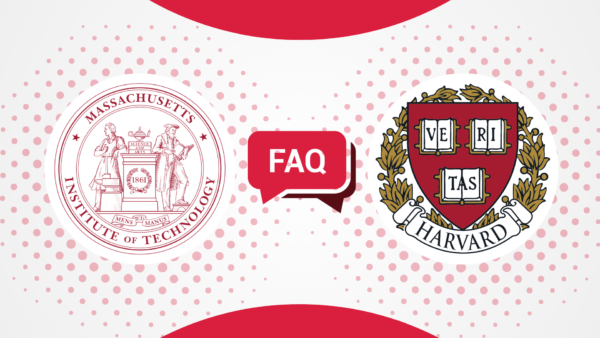
Is MIT harder to get into than Harvard?
When it comes to admissions, MIT and Harvard are two of the most competitive schools in the United States. They both have an acceptance rate of 3 – 5%.
Why choose Harvard over MIT?
Here are the reasons to choose Harvard over MIT
– If you are looking at social sciences, law, medicine, arts, and the humanities
– If you thrive better in a larger university with a more diverse population
– If you want to participate in Division I athletics
– If particular about studying in an Ivy League school.
Is MIT better than Ivy League Schools?
It depends on the program/ discipline you are looking at. When it comes to STEM and allied subjects, MIT even surpasses the Ivies.
Is MIT better than IIT?
Both MIT and the Indian Institute of Technology (IIT) are globally recognised institutions in the field of STEM. However, MIT is ranked higher and has greater global recognition than IIT.
What is the GPA required for MIT?
Typically a weighted GPA of 4.1 or higher is required to be considered competitive. However, a lower GPA can be counterbalanced by high SAT/ ACT scores.
Why is MIT not part of the Ivy League?
The history of the Ivy League goes back to athletics and participation in Division I sports. MIT athletes participate in NCAA Division III. Moreover, when the Ivy League was officially established in 1954, MIT did not have a robust athletic program.
Is Harvard expensive?
Typically, the sticker price for Harvard is around $80,000 per year. However, the university has numerous financial aid and scholarship options for its students.
Can I go to MIT after 12th?
Yes, MIT has a wide array of undergraduate programs that you can apply to, after 12th. While the university does not have any specific required courses, it is expected that applicants are enrolled in a broad, rigorous program in high school. Students are also required to take standardized tests such as the SAT or ACT.
Can I get a 100% scholarship to MIT or Harvard?
Both MIT and Harvard meet 100% demonstrated financial need of students, irrespective of their immigration status. Demonstrated financial need is the difference between the Cost of Attendance and your Expected Family Contribution. For families earning less than $75,000 per annum ($85,000 for Harvard), family contribution is zero.
You May Also Like
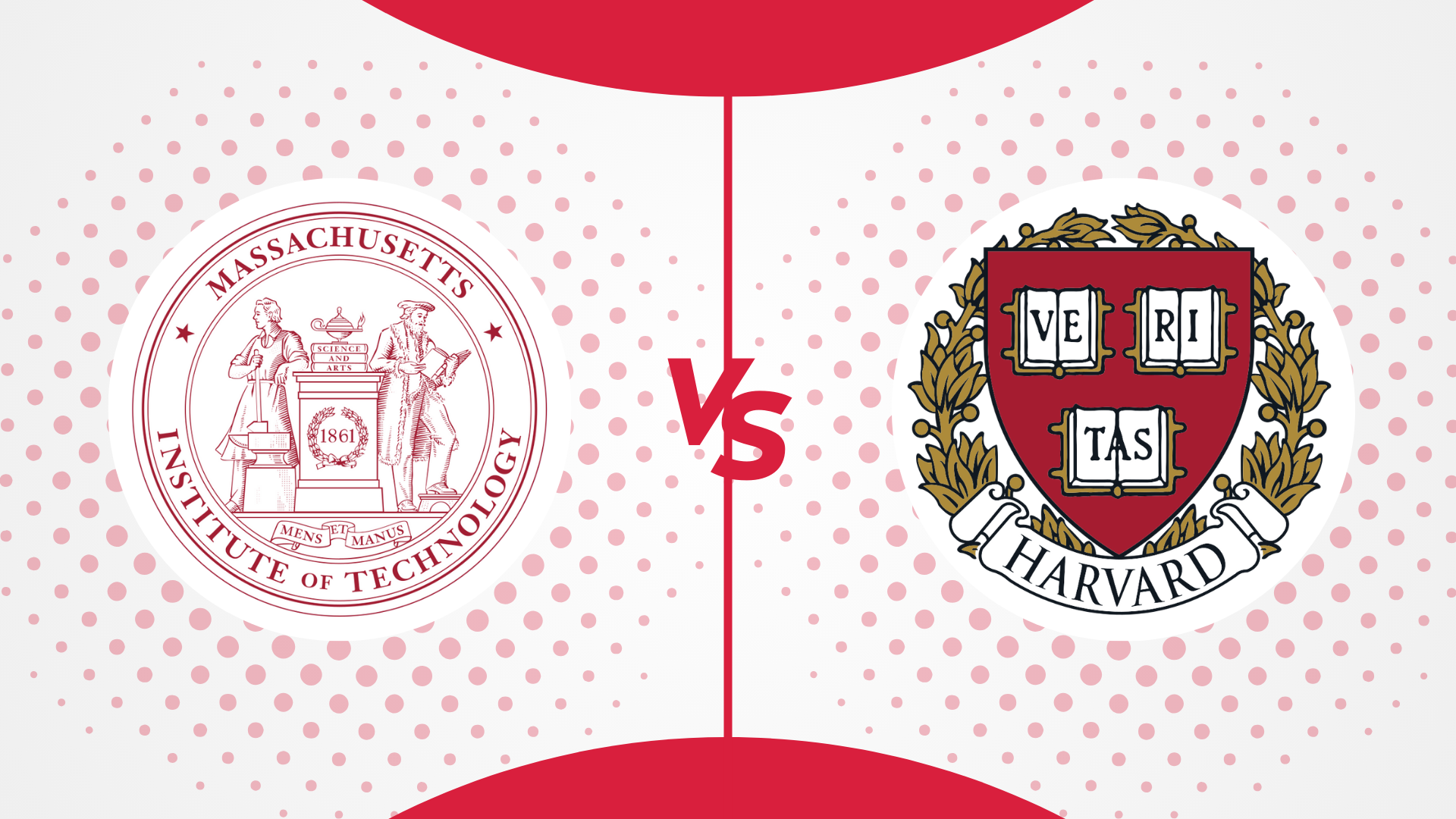
Compare more universities in USA
-
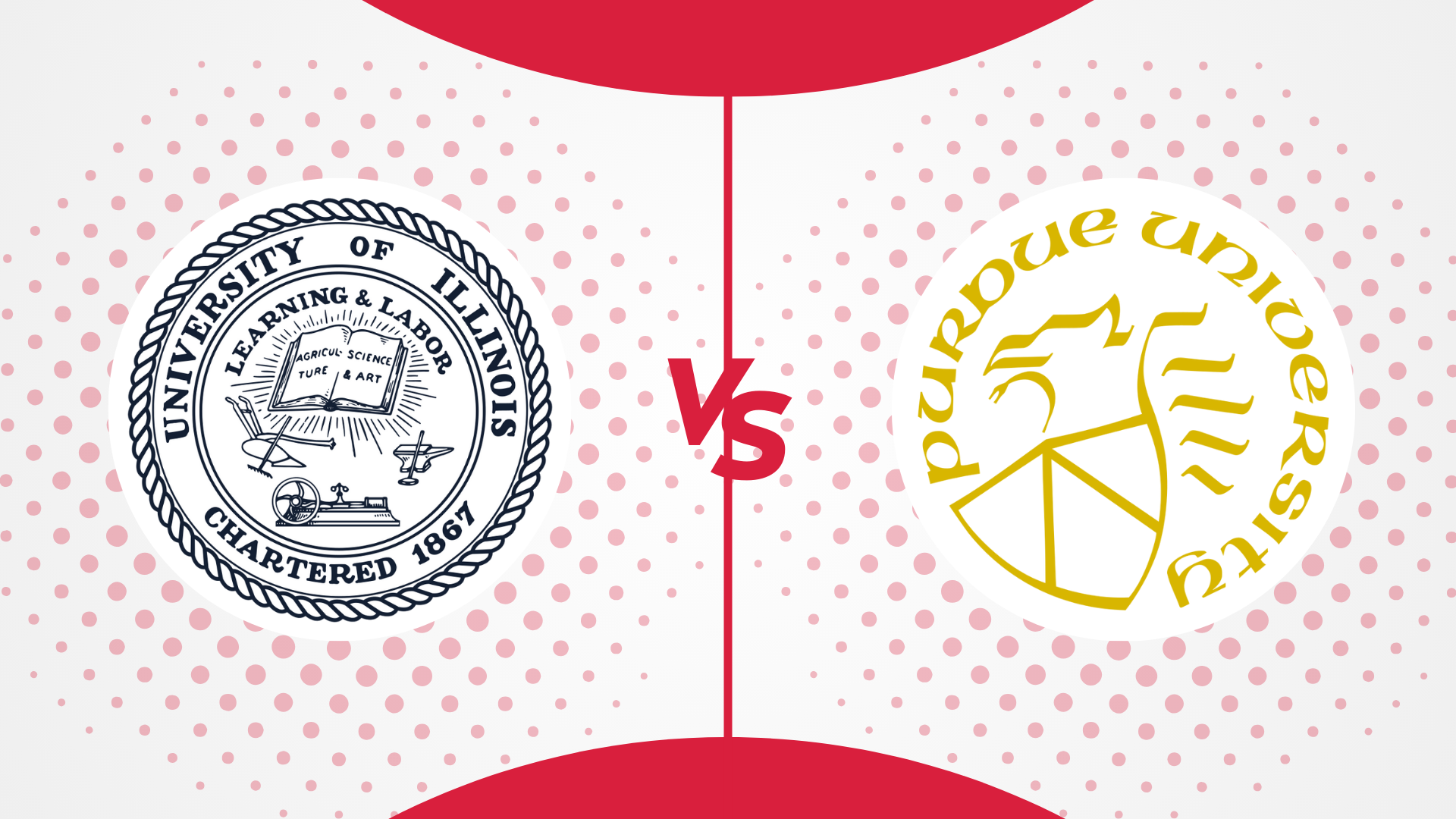
Purdue vs UIUC: How Do They Compare in 2025?
December 16, 2024 -
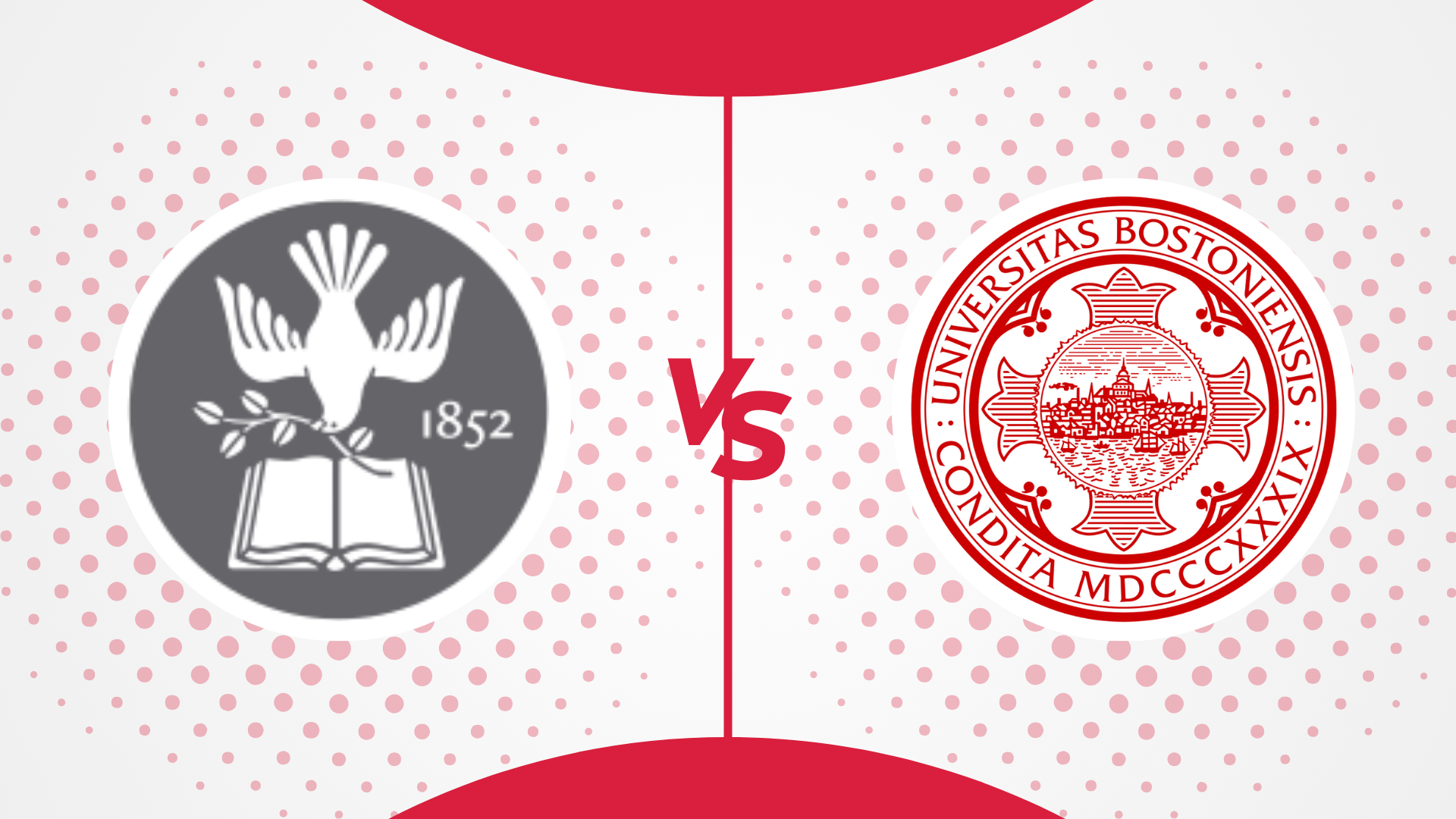
Tufts vs BU: How Do They Compare in 2025?
December 16, 2024 -
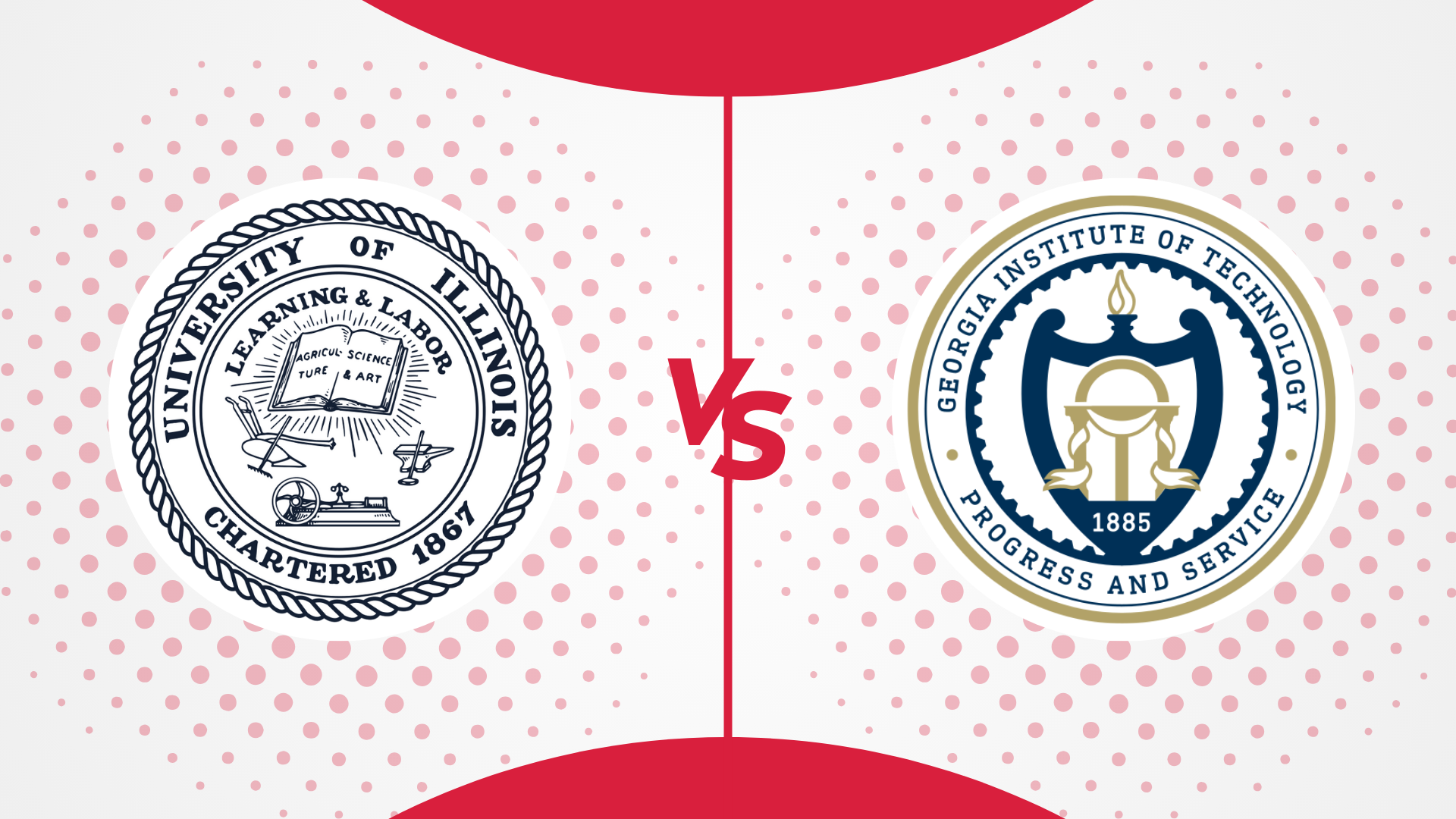
UIUC vs Georgia Tech: How Do They Compare in 2025?
December 3, 2024 -

Georgia Tech vs UT Austin: How Do They Compare? [2025]
September 24, 2024 -

UC Davis vs UC Irvine: How Do They Compare in 2024
September 10, 2024 -

UC Santa Barbara vs UC Davis: How Do They Compare? [2024]
August 30, 2024 -
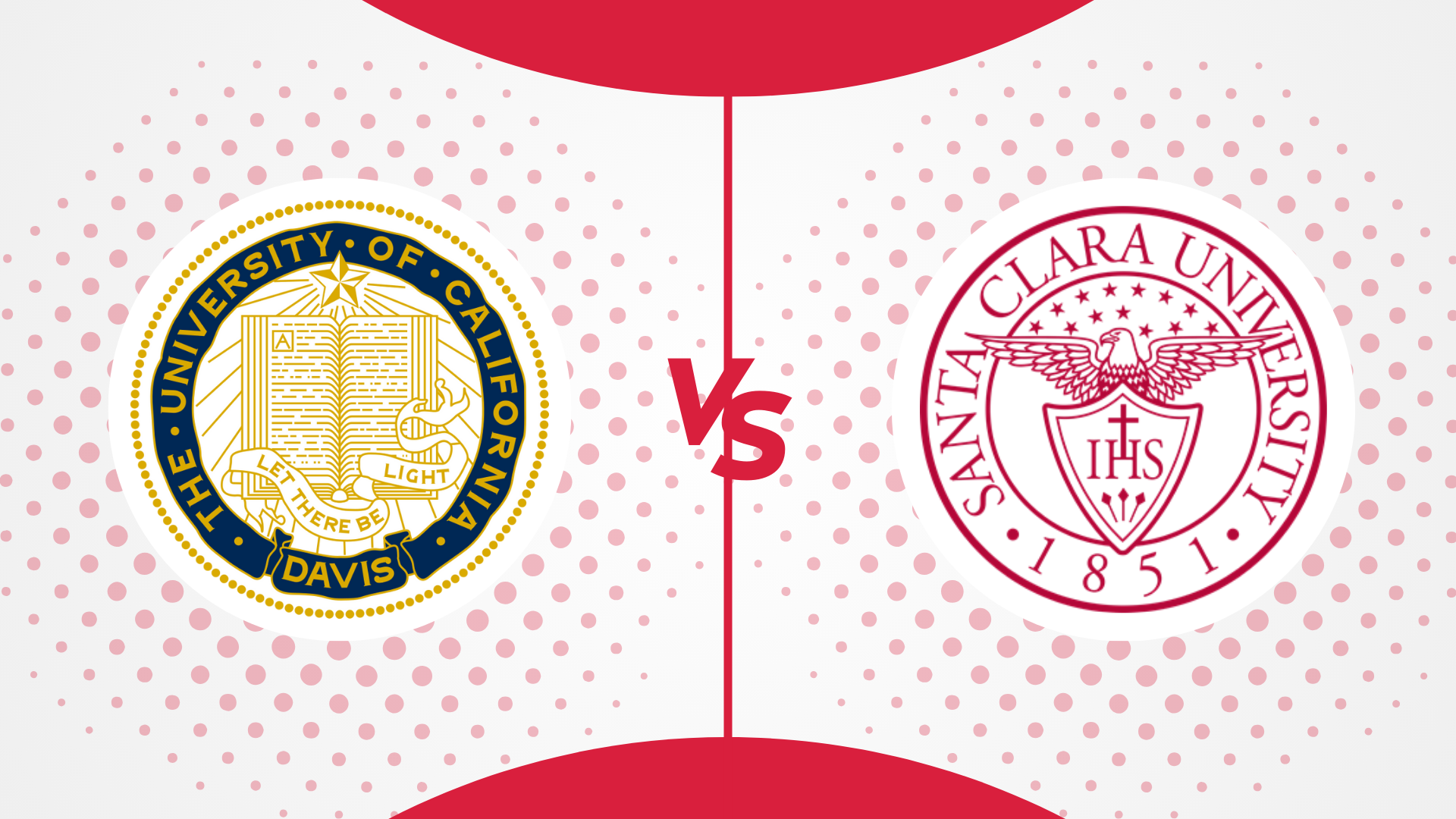
UC Davis vs Santa Clara University: How Do They Compare? [2024]
August 23, 2024 -

University of Chicago vs Northwestern University: How Do They Compare
August 20, 2024 -

Georgia Tech vs MIT: How Do They Compare? [2024]
August 7, 2024 -

Caltech vs MIT: How Do They Compare [2024]
August 2, 2024 -

Cornell vs Harvard: How Do They Compare? [2024]
July 27, 2024 -

Yale vs Harvard: How Do They Compare [2024]
July 22, 2024 -

Harvard vs Princeton: How Do They Compare [2024]
July 16, 2024 -
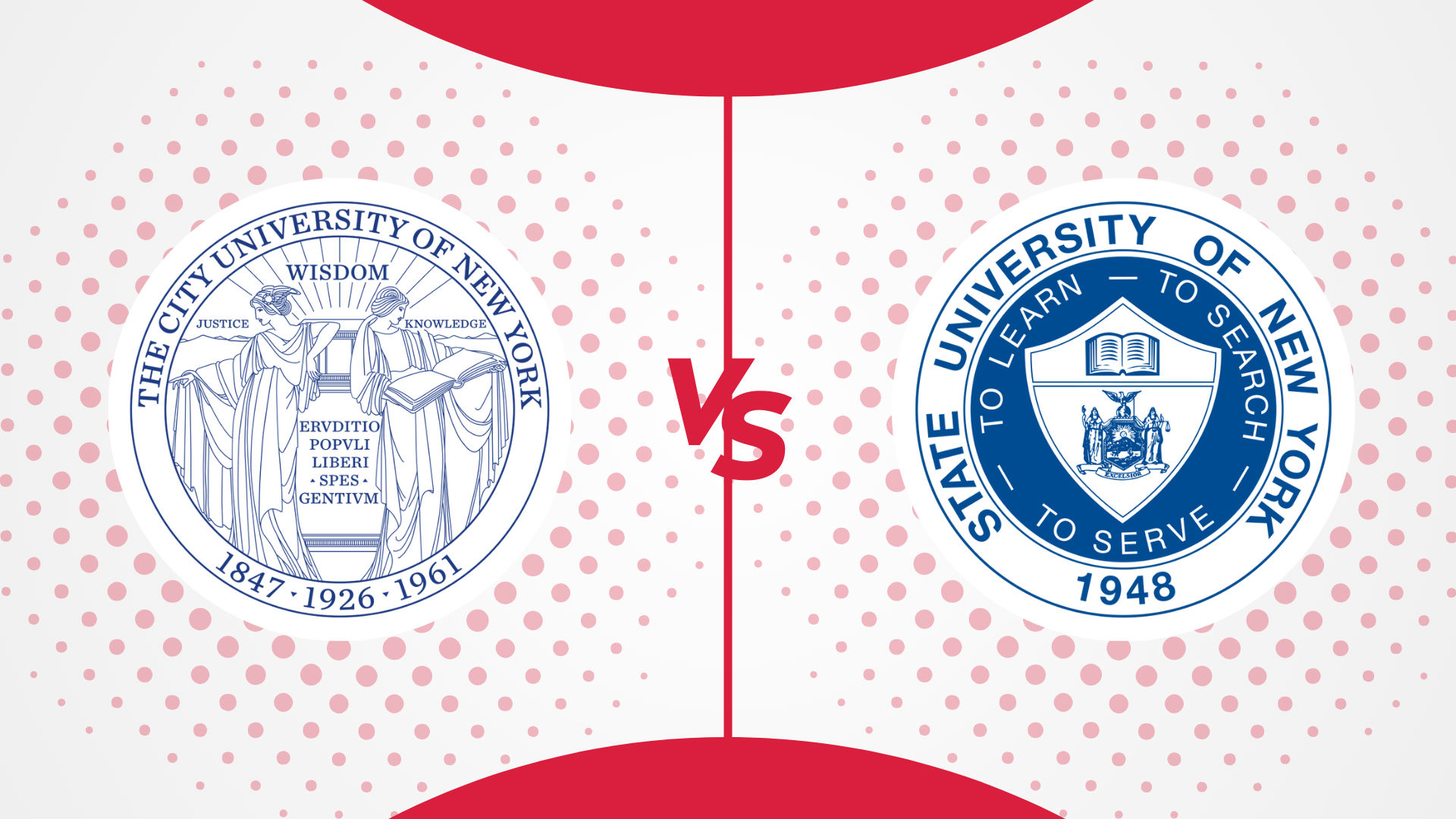
CUNY vs SUNY: Which One is For You in 2024
July 9, 2024 -
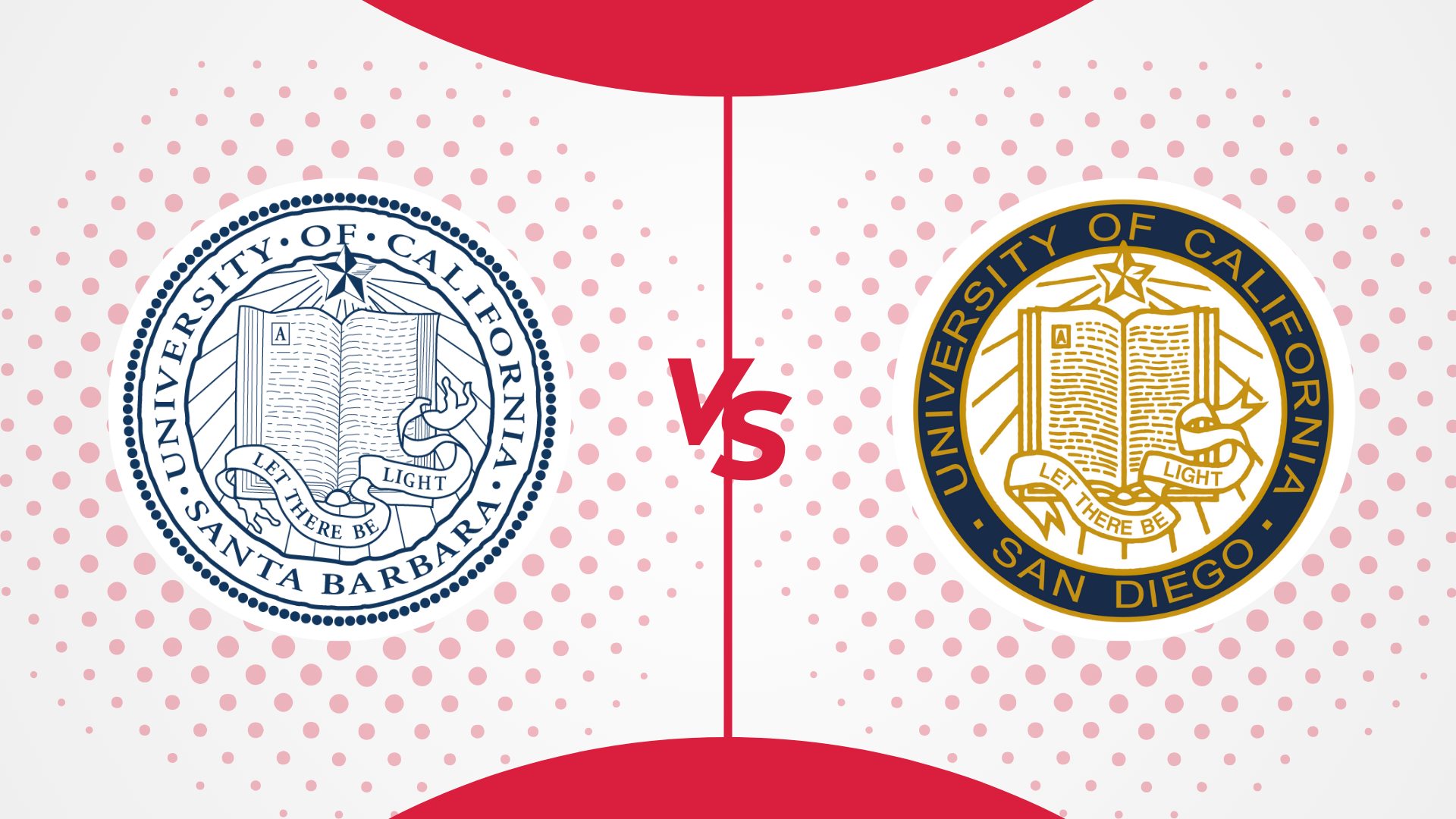
UCSD VS UCSB: Which One is Better For You in 2024
July 9, 2024 -
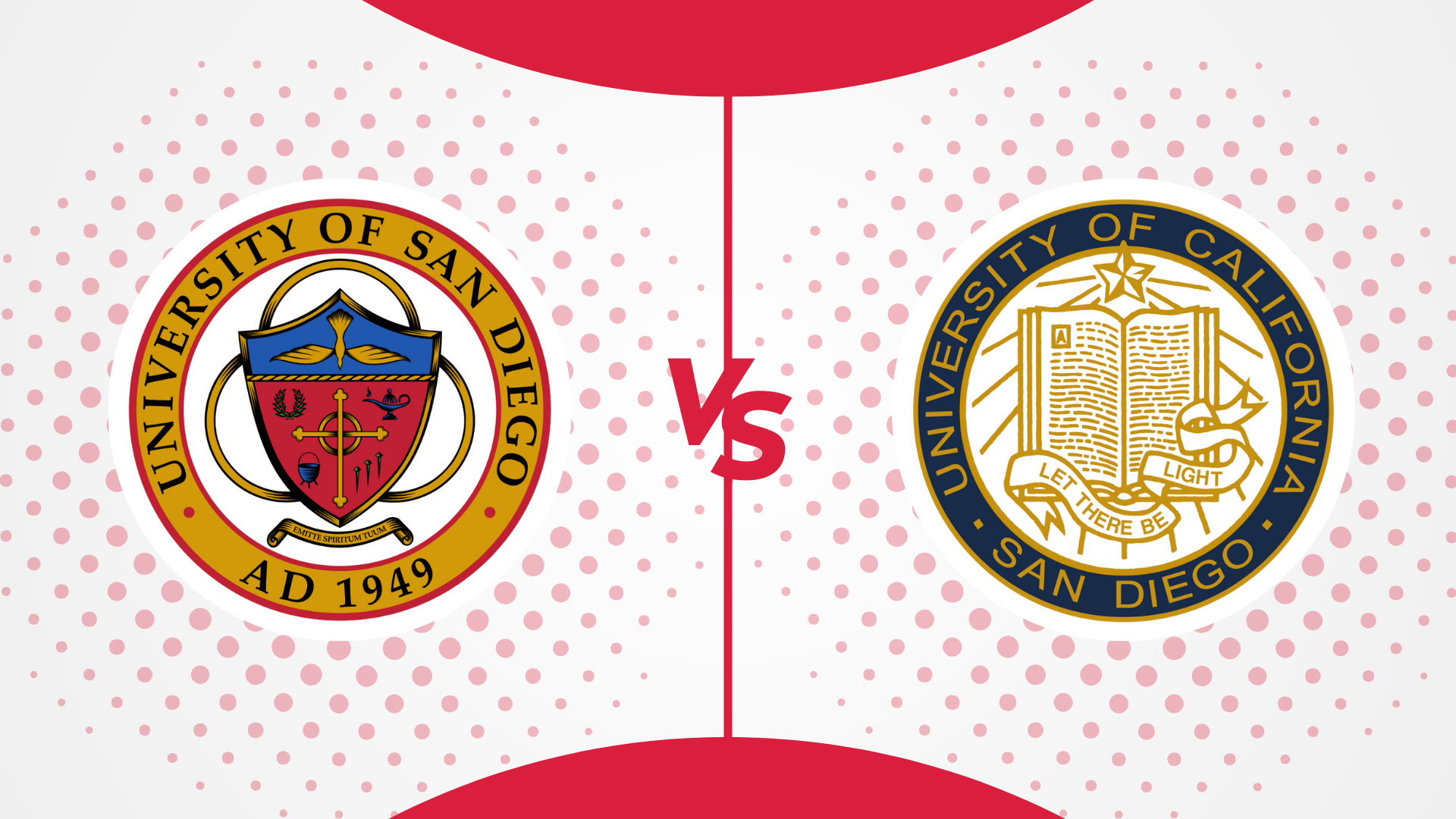
USD vs UCSD: Which one should you choose in 2024?
July 9, 2024 -
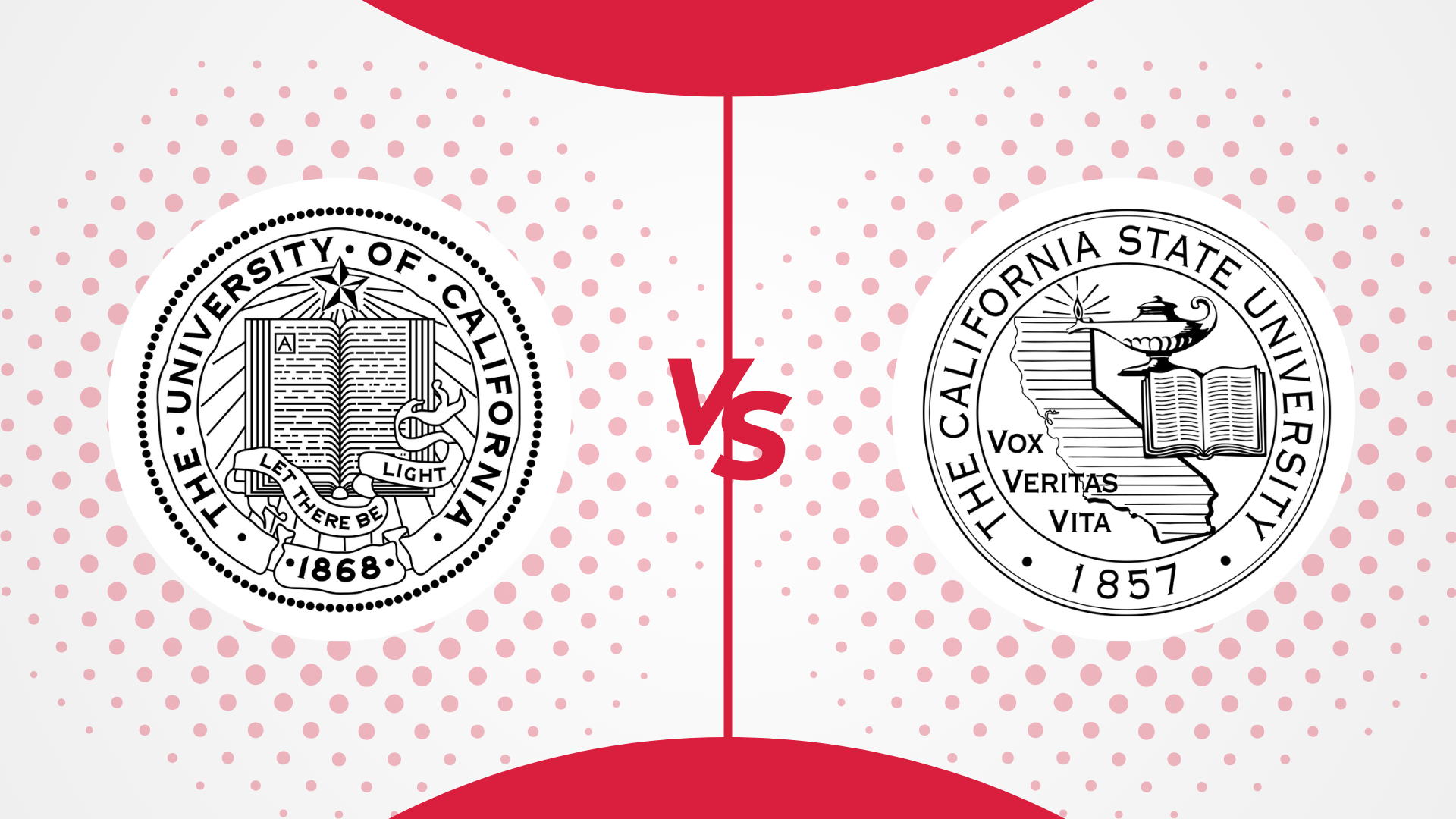
UC vs CSU: Which One is Better in 2024?
July 9, 2024 -
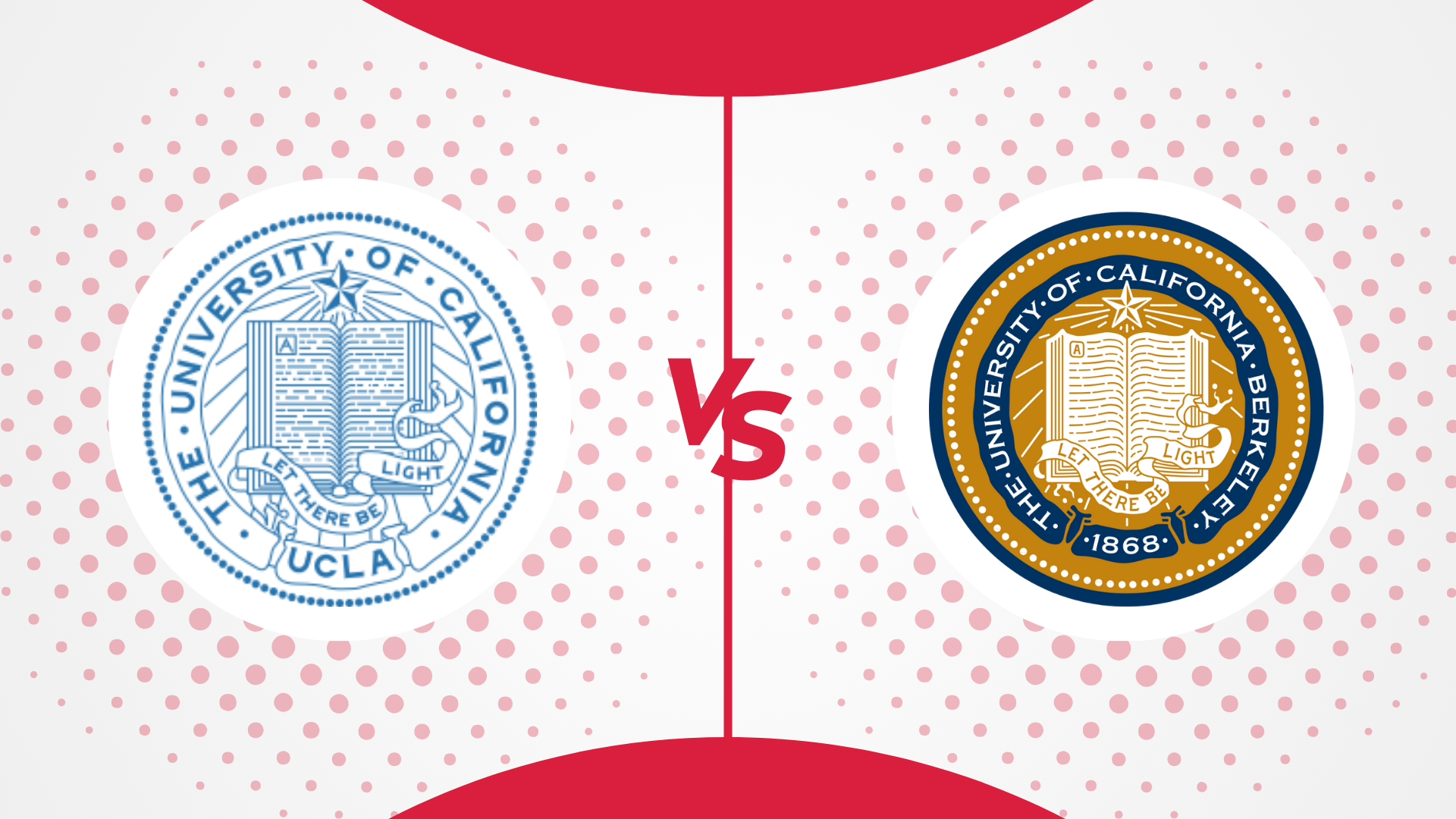
UCLA vs UC Berkeley: Which One is Best in 2024
July 9, 2024 -

University of Arizona vs Arizona State University: Which One is Better in 2024
July 9, 2024 -

Penn State vs UPenn: Which is Better for International Students in 2024
July 9, 2024 -

Northeastern vs Northwestern: Which One is Best in 2024
July 9, 2024 -

Northeastern University vs Purdue University – Which One is Better in 2024?
July 9, 2024 -

Boston College vs Boston University: Which One is the Best in 2024?
July 9, 2024 -

LSU vs UCLA: Which Is Better For You In 2024?
July 8, 2024 -

NYU vs Boston University: Which One Is Better For You In 2024
July 8, 2024 -

USC vs UCLA: Which One Is Better For You In 2024?
July 5, 2024 -
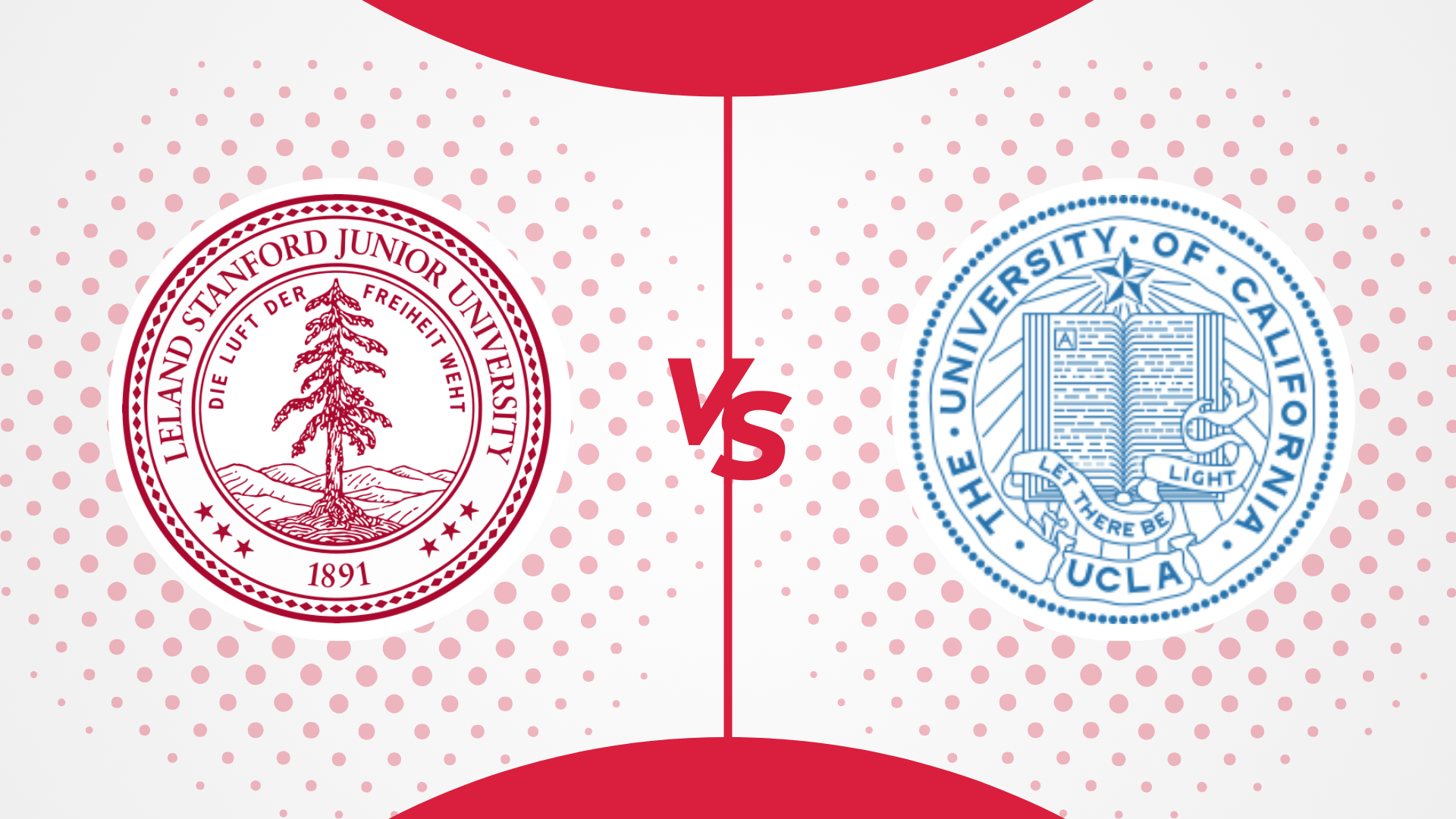
Stanford vs UCLA: Which One is Better For You in 2024
June 28, 2024 -
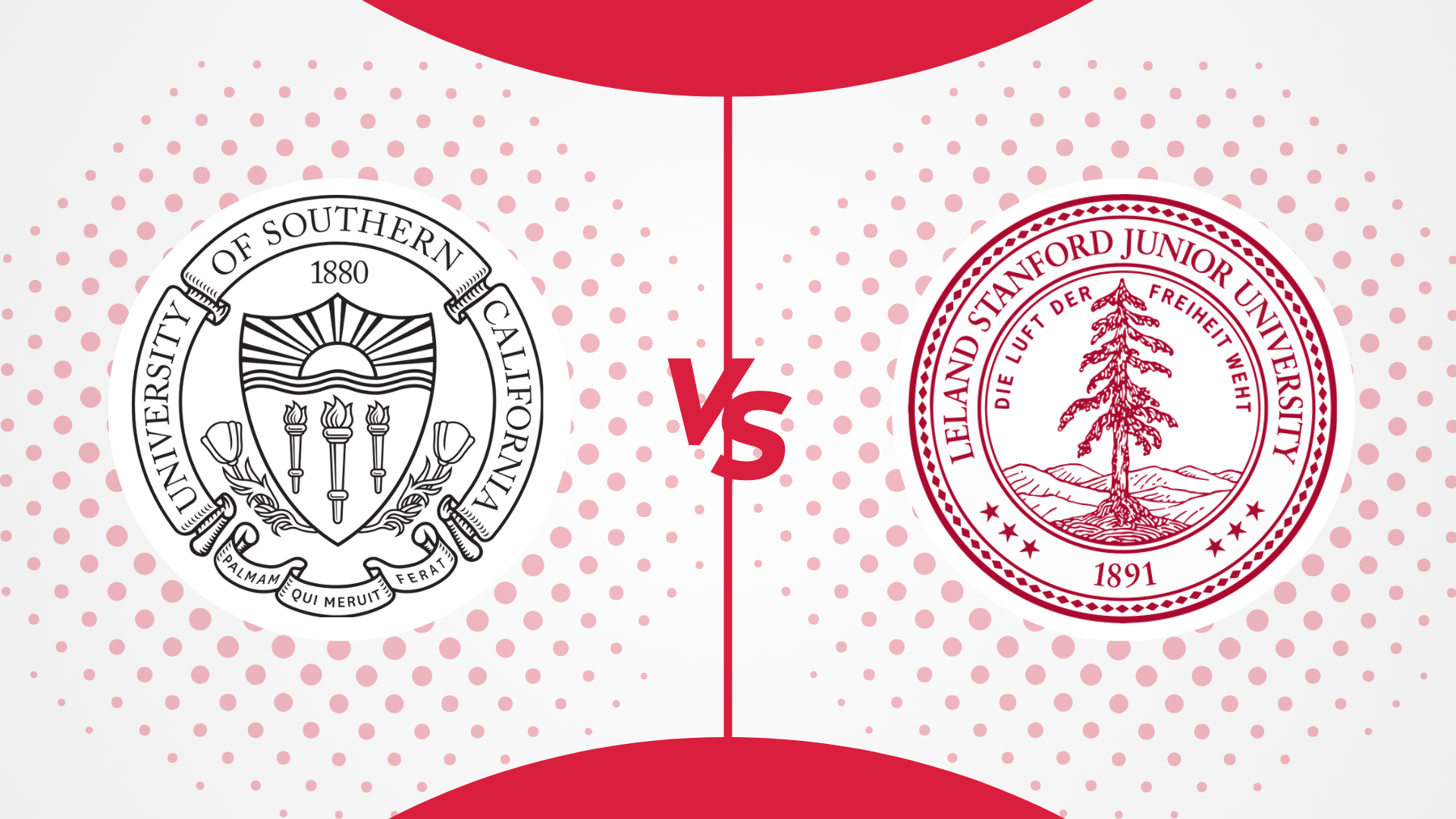
USC vs Stanford: Which One is Better For You in 2024
June 28, 2024 -
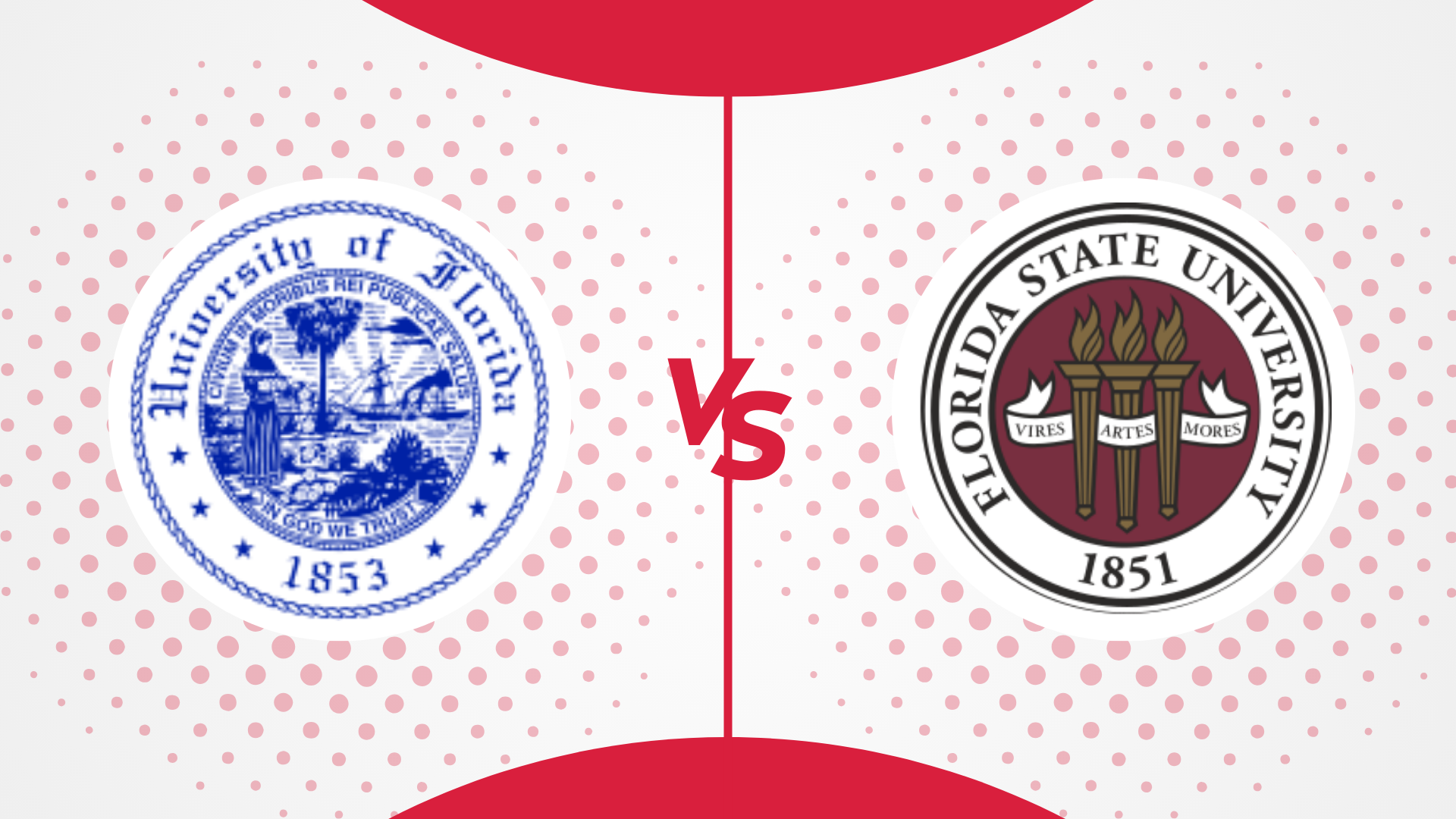
University of Florida vs Florida State University: Which One is Better For You in 2024
June 28, 2024 -

NYU vs Columbia: Which Is Better In 2024?
June 28, 2024 -

Princeton vs Columbia: Which Is Better In 2024?
June 28, 2024 -

NYU vs Cornell: Which One Is Better In 2024?
June 28, 2024 -

Boston University vs Northeastern: Which one is best in 2024
June 28, 2024 -

NYU vs UCLA: Which Is Better For You In 2024?
June 28, 2024
